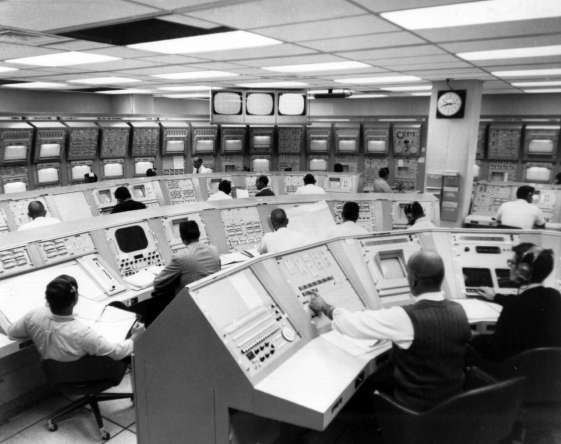Acceptance Checkout Equipment Tested The Apollo Spacecraft

It was a little complex for the older generation
In July the acceptance checkout equipment team began procuring equipment for an experimental station at the Cape. Gemini officials helped fund the laboratory in hopes that the system might benefit their program. The Instrumentation Branch activated the station in September; its original equipment consisted of a small computer, an alphanumeric display device, a decommutation system, and the manual uplink prototype. A downlink prototype was put in operation the following month.
By April 1963 the team was working two digital computers in a non-synchronized mode, exchanging data through a shared memory base. Gordon Cooper's 22 revolutions around the world in May 1963 marked another milestone for the station. The experimental equipment provided real-time support of preflight checkout and in flight operations for the last Mercury mission. The station's computers displayed Faith 7's telemetry data on screens and high-speed line printers. The laboratory was fast becoming one of the tourist attractions at Cape Canaveral; during their visits to the Cape, new astronauts spent a half-day in the station.

The General Electric Company entered the ACE story in November 1962. GE's Apollo roles, as delineated by NASA management, included the development of "overall system checkout equipment" Since ACE would test North American's command and service modules and Grumman's lunar module, the checkout system fell within GE's area of responsibility.
At first GE provided engineering support. Within three months Leroy Foster had 20 engineers working on equipment specifications. The decision at NASA Headquarters to have GE produce the Apollo checkout stations (as a modification to its existing contract) touched off ten months of proposals and counterproposals.
The main dispute between GE and Cape officials centered on the issue of government-furnished equipment. The Preflight Operations Division intended to provide GE most of the components, buying parts already developed by other companies. GE, understandably, thought it could improve on some of the equipment.
At a stormy July session in Daytona, Jack Records, GE's number two man at the Apollo plant, and Dr. Lyndell Saline questioned the suitability of Control Data Corporation's 160G computer. When Preston asked for proof of the computer's inadequacy, however, the GE executives withdrew their charge.
The CDC 160 series was a series of minicomputers built by Control Data Corporation. The CDC 160 and CDC 160-A were 12-bit minicomputers built from 1960 to 1965; the CDC 160G was a 13-bit minicomputer, with an extended version of the CDC 160-A instruction set, and a compatibility mode in which it did not use the 13th bit. The 160 was designed by Seymour Cray - reportedly over a long three-day weekend. It fit into the desk where its operator sat.